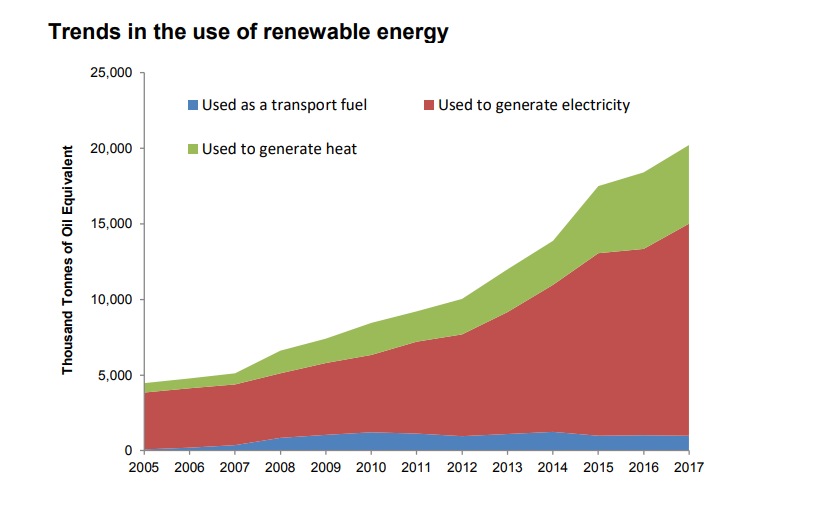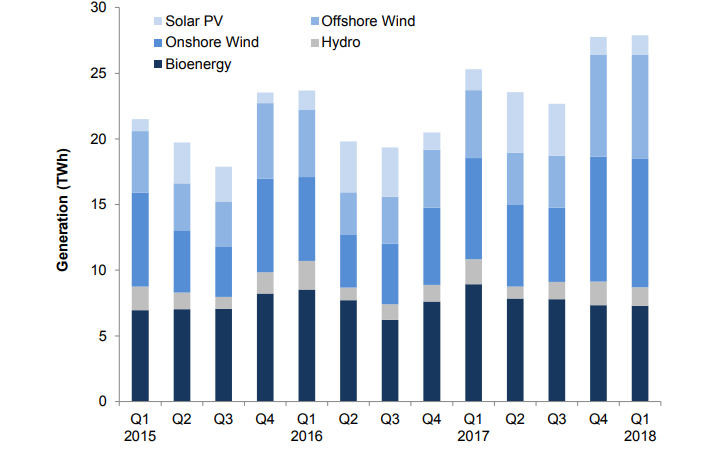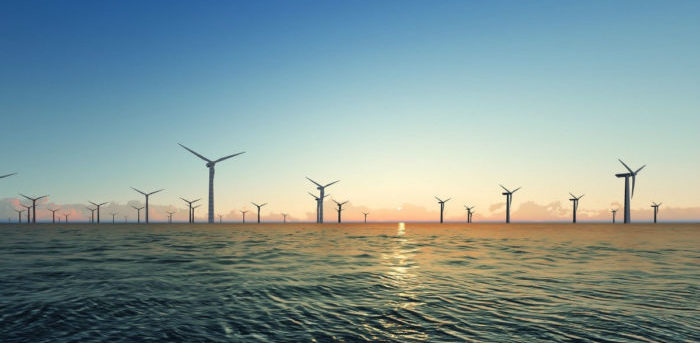In its ‘Energy Trends‘ report for the first quarter of 2018, the UK Department for Business, Energy and Industrial Strategy said the country has made 15% progress in the target set under the 2009 EU Renewable Directive. Provisional calculations show that 10.2% of final energy consumption in 2017 came from renewable sources; up from 9.2% in 2016.
In addition, there was an increase in the fuel used to generate electricity (up 13%); heat fuels also increased, by 3.6%though transport renewable fuels fell slightly, by 1.2%.

Key points for 2018 Q1
- Total energy production was 1% lower than in the first quarter of 2017, despite increased oil output and record high output from wind, solar and hydro.
- Total primary energy consumption for energy rose by 3.3%. However, when adjusted to take account of weather differences between the first quarter of 2017 and the first quarter of 2018, total primary energy consumption fell by 1.6%.
- Final energy consumption (excluding non-energy use) was 7.0% higher than in the first quarter of 2017. Domestic consumption rose by 13.2% due to colder weather. Temperatures in the first quarter of 2018 were on average 1.9 degrees Celsius colder than the same period a year earlier, with average temperatures in both February and March being colder than a year earlier. On a temperature corrected basis, final energy consumption was up 0.5 per cent over the same period.
- Of electricity generated in the first quarter of 2018, coal accounted for 9.4%, whilst gas accounted for 39.9%. Nuclear generation accounted for 17.9% of total electricity generated in the first quarter of 2018.
- Renewables’ share of electricity generation (hydro, wind and other renewables) increased to a record quarterly high of 30.1% in 2018 Q1, compared to 27.0% in 2017 Q1, mostly due to increased capacity and higher wind speeds.
- Renewable electricity generation was a record 27.9 TWh in the first quarter of 2018, an increase of 10.2% on the same period a year earlier.
- Renewable electricity capacity was a record 41.9 GW in the first quarter of 2018, an increase of 11.2% on the same period a year earlier, nearly half of this was due to new offshore wind capacity.

Emma Pinchbeck, Executive Director of UK’s non-profit renewable energy trade association RenewableUK, said:
These new figures show that wind power alone is generating nearly 20% of the UK’s entire electricity needs. Although that’s impressive, it’s just the start. Today’s landmark report from the Government’s official advisory body, the Committee on Climate Change, warns that we need to do more to reach our clean energy targets, and it recommends deploying more onshore wind because it’s the cheapest source of energy. We hope Ministers will listen to their own experts and take swift action to lift the block on future onshore projects.






























































